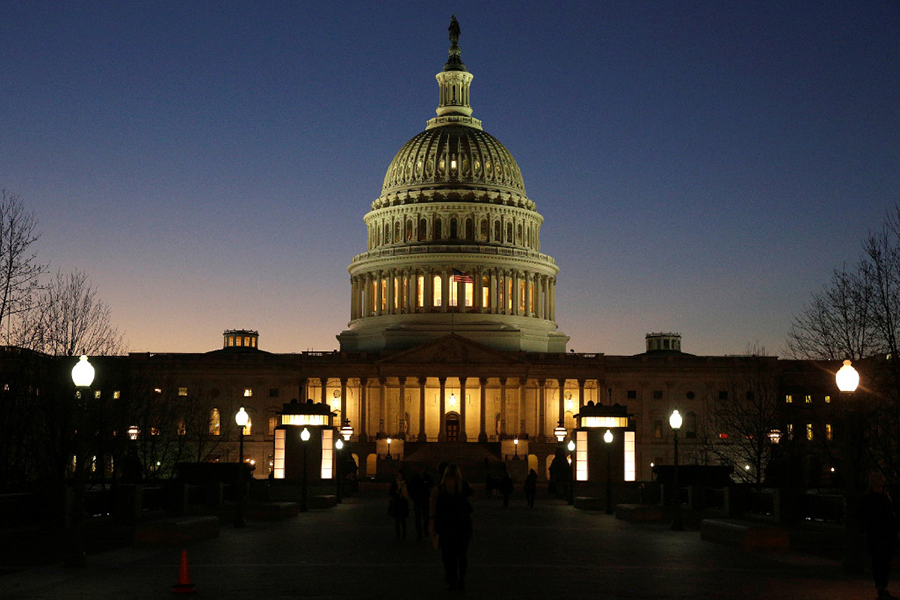Painting depicting cops as pigs prompts fracas on Capitol Hill
Loading...
A high school student’s painting that takes a political stance on the police shooting that killed Michael Brown and sparked outrage in Ferguson, Mo., is drawing controversy along racial, partisan lines from its hanging spot on a Capitol Hill wall.
The bold work depicts an animal, which many have described as a pig, dressed in a police officer’s uniform. Painted by 18-year-old David Pulphus, a student from a congressional district of Rep. William Lacy Clay (D) of Missouri, the work was selected as part of a Capitol Hill art contest, and hangs alongside other student works from around the country.
But not everyone appreciated the painting’s political stance. Last Friday, Rep. Duncan Hunter (R) of California removed the piece and returned it to Representative Clay’s office.
Clay rehung the painting in its original space Tuesday, backed by the support of members of the Congressional Black Caucus.
"I do not agree or disagree with this painting," he said. "But I will fight to defend this young man's right to express himself because his artwork is true for him and he is entitled to that protection under the law."
The painting, which comes from a student who lives in the same district as Ferguson, shows an officer with an elongated face and tusks amid signs that read "history," and "stop kill." In the background, the St. Louis Gateway Arch appears, along with a black man peering out from behind prison bars. Another protester is depicted as a wolf.
Representative Hunter has argued that free speech cannot be used as a justification to hang the portrait, as its perceived offensive nature violates the rules of the art contest and makes it unfit to hang in the Capitol.
"We looked up the rules for the art competition: You’re not allowed to have paintings that are sensationally divisive," Hunter told Politico. "Basically the rules don’t allow for things like this."
The art competition does bar display of any pieces "depicting subjects of contemporary political controversy or a sensationalistic or gruesome nature."
The issue has escalated from a feud between Clay and Hunter to one involving congressional GOP leadership. Speaker of the House Paul Ryan (R) of Wisconsin has assured House members that it will be removed, and longtime police chief Rep. David Reichert (R) of Washington has announced plans to write a letter to the Architect of the Capitol, urging them to remove it for violating art standards.
But Clay is ready to challenge those views, arguing that several works hang around the building that could be offensive to blacks, such as portraits of segregationists like Sen. James Eastland (D) of Mississippi who served for more than three decades in the Senate until 1978 with a strong opposition to the civil rights movement or statues of Robert E. Lee, who led the Confederate States during the Civil War.
He also reportedly filed a police report against Hunter for removing the item, but Capitol Police, who found the painting concerning, did not take the complaint, according to Politico.
Critics of Hunter say his opposition to the painting is a stunt meant to steer the focus away from ethical questions surrounding his campaign spending, including some $600 he’s accused of using to ship his daughter’s pet rabbit.
Still, a group of lawmakers and supporters seeking to protect free expression could have some sway in the debate. Clay has found an unlikely, but possibly helpful, ally in St. Louis police chief Sam Dotson, who has emphasized the artist’s right to express himself.
"Sam Dotson can have an opinion and may not like the painting,” the chief said at a St. Louis forum Saturday, “but Sam Dotson the police chief or any police officer cannot have an opinion about it because that young man has a right to have his voice heard and it's our job to make sure his rights are protected."








